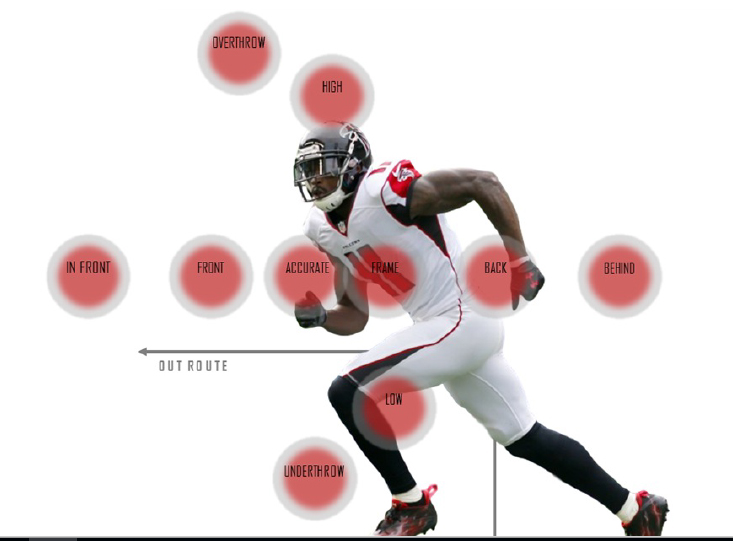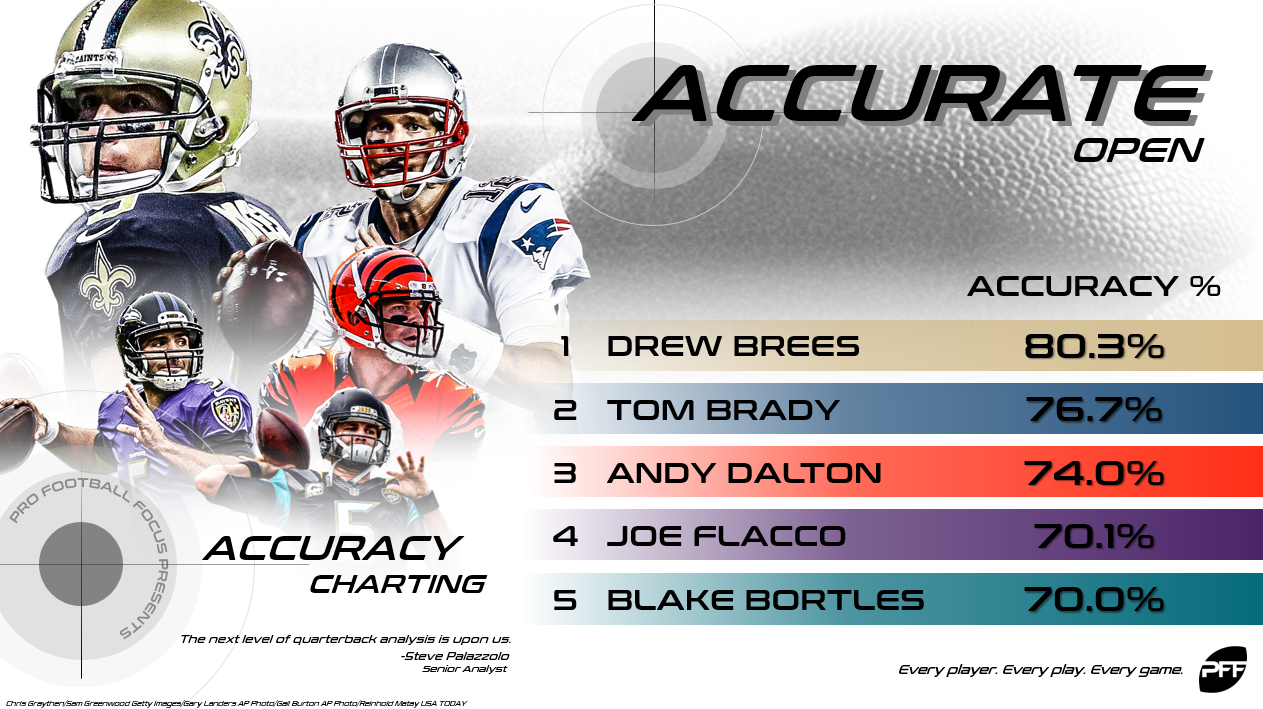This offseason, we introduced PFF’s new advanced quarterback charting data, featuring an entirely new way of evaluating the game’s most important position. While the QB Annual and PFF Draft Guide are the best place to start for a broad overview of each NFL quarterback’s advanced accuracy, I’ll be taking you through an in-depth breakdown of our data points throughout the spring and summer.
First, be sure to read the overview of our process, and it’s always nice to have this image handy when going through the data.

Today’s focus is overall accuracy at various levels of separation, including “accuracy plus” which is our way of identifying “perfect” throws.
When it comes to separation, we are using three basic buckets: open, step/closing and tight. An “open” throw is generally two-plus steps of separation while “step/closing” is best described as a receiver having up to two steps of separation, either running away from a defender (step) or with a defender closing on a play (closing). Since “step” and “closing” are similar in terms of level of separation, they have been placed in the same bucket. “Tight” throws are defined by a defender being within an arm’s length of the receiver, or in the right spot in a passing window so as to discourage the throw.
It’s important to note that the open and step/closing throws appear to be most stable in our early work with two years of data, while tight throw performance can fluctuate greatly from year to year.
Remember: this is all about actual ball location of the pass, not just throwing a “catchable” pass. We’ve proven the importance of ball location with regard to yards after the catch and expected points added, so putting the ball in the right spot is crucial in order to optimize success.
Open




 © 2024 PFF - all rights reserved.
© 2024 PFF - all rights reserved.